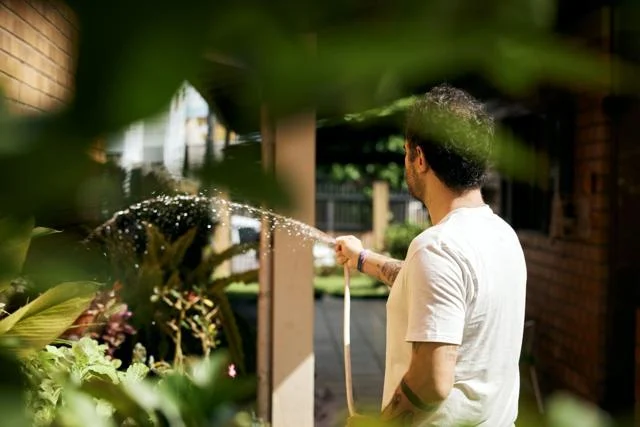Questions to consider when deciding what to plant
By Bonnie Orr
WSU Chelan/Douglas County Master Gardener


“Well, it looked like a good place to put that plant …” When plants fail to thrive, some gardeners claim they must have a “brown thumb.” But that is not necessarily true.
Deciding what to plant and where to plant it in your yard needs a true understanding of your landscape and the characteristics of the plant you have selected.
Some questions to answer and some rules of thumb to consider:
- What are the water requirements of the plant and how will they be delivered? Standing by the hose-end dooms the plant to failure because you do not have a means of knowing how much water you are applying. Too much water can be as deadly as too little water.
- What are the light requirements for the plant? Full sun means 6-8 hours of direct sun on a place on the ground; it does not mean that it is daylight.
- What are the full-grown dimensions of the plant? Do you know how wide and how tall the plant will be? You need to determine if you have enough square feet allotted to the mature plant. Constantly pruning a plant back is tiresome to you and adversely affects its health.
- What is the plant’s cold zone designation? USDA has reconfigured the plant hardiness, the cold zones, in the U.S. Our area hovers in the 6-7 zone. The cold can be very slightly adjusted depending on the slope of your yard and the effective use of mulch to protect the plant’s root system. Even if it freezes to the ground, many plants with protected roots will re-sprout. Wishing you could still grow the plants you loved to grow on the West side of the Cascades is merely a fantasy.
- Heat tolerance is more difficult to adjust since the plant’s physical makeup determines how much water it can deliver to leaves. Adding more water to the soil can lead to root rot. In addition, soil organisms are affected by heat. The American Horticultural Society has created zones based on the number of days over 86 degrees. Many plant labels now contain heat zone information. In North Central Washington, we range between zone 6 and zone 7. Zone 7 means 61-90 days over 86 degrees. NCW had 198 frost-free days last year, the highest number ever recorded locally.
- What are the seasonable impacts of the plant. If it is deciduous, are the leaves going to fall on your deck or in your rock garden? What about the tree’s flowers, seeds or needles? Not something to look forward to, usually. If the plant is supposed to screen a view, what happens when the branches are all bare?
- How does it rank for fire-wise safety. The placement in the yard needs to be considered if it is a plant likely to burn fast and hot. Those plants need to be at least 30 feet from the house.
- How will the mature plant affect your view or your neighbor’s view?
- How invasive is the plant? Is it going to reseed readily or spread by underground stems into areas where it has not been intended?
- How will the plant thrive in the lawn? Usually, large shrubs and trees do not thrive when planted in the lawn because the lawn and the ornamental plant have different irrigation requirements. On the other hand, planting lawn under trees is not usually successful because the tree’s surface roots will claim the moisture.
Happy plant selection. Plan a fabulous garden this year.
A WSU Chelan and Douglas County Master Gardener column appears weekly in The Wenatchee World. To learn more, visit bit.ly/MGchelandouglas or call (509) 667-6540.
